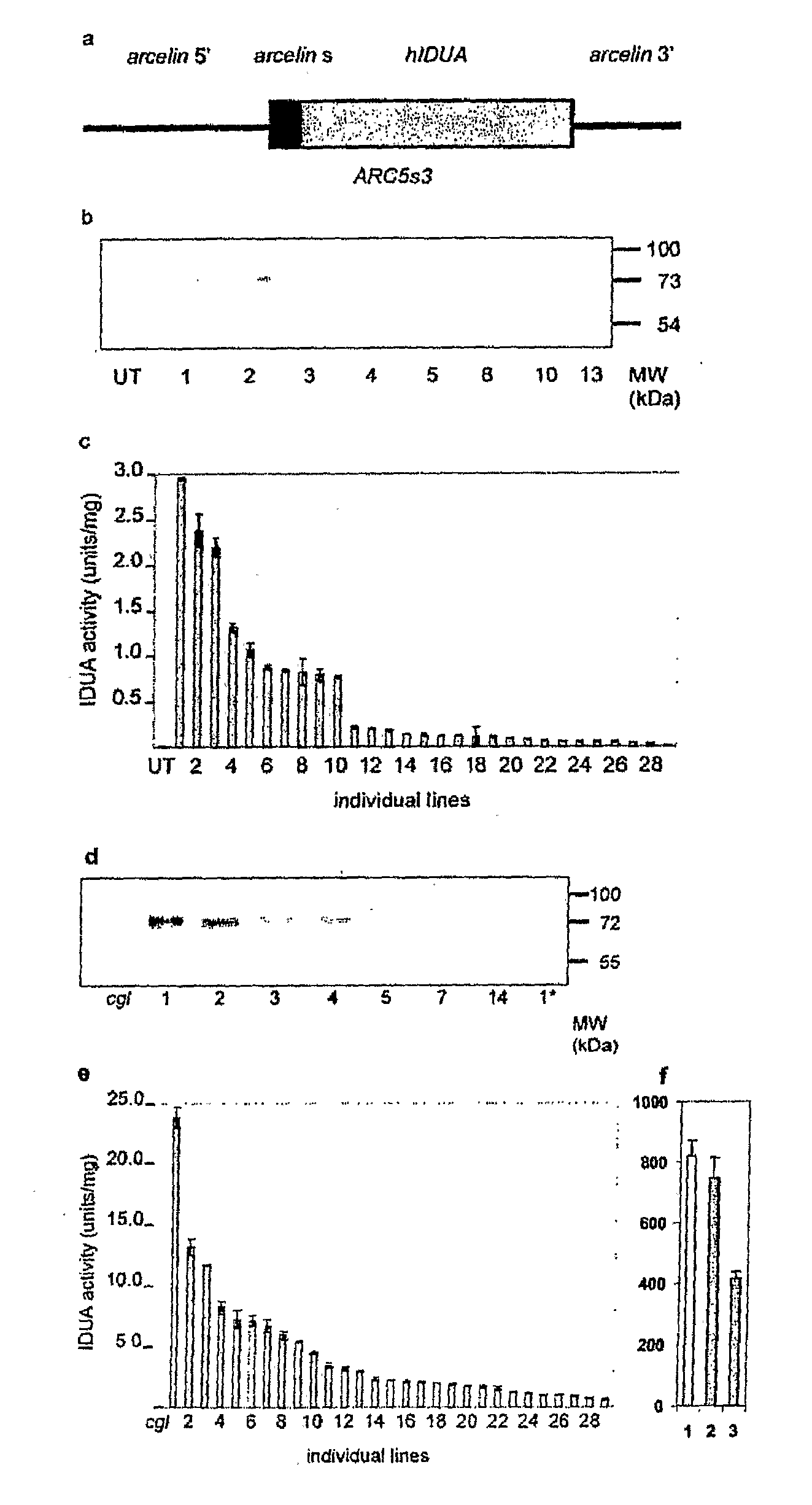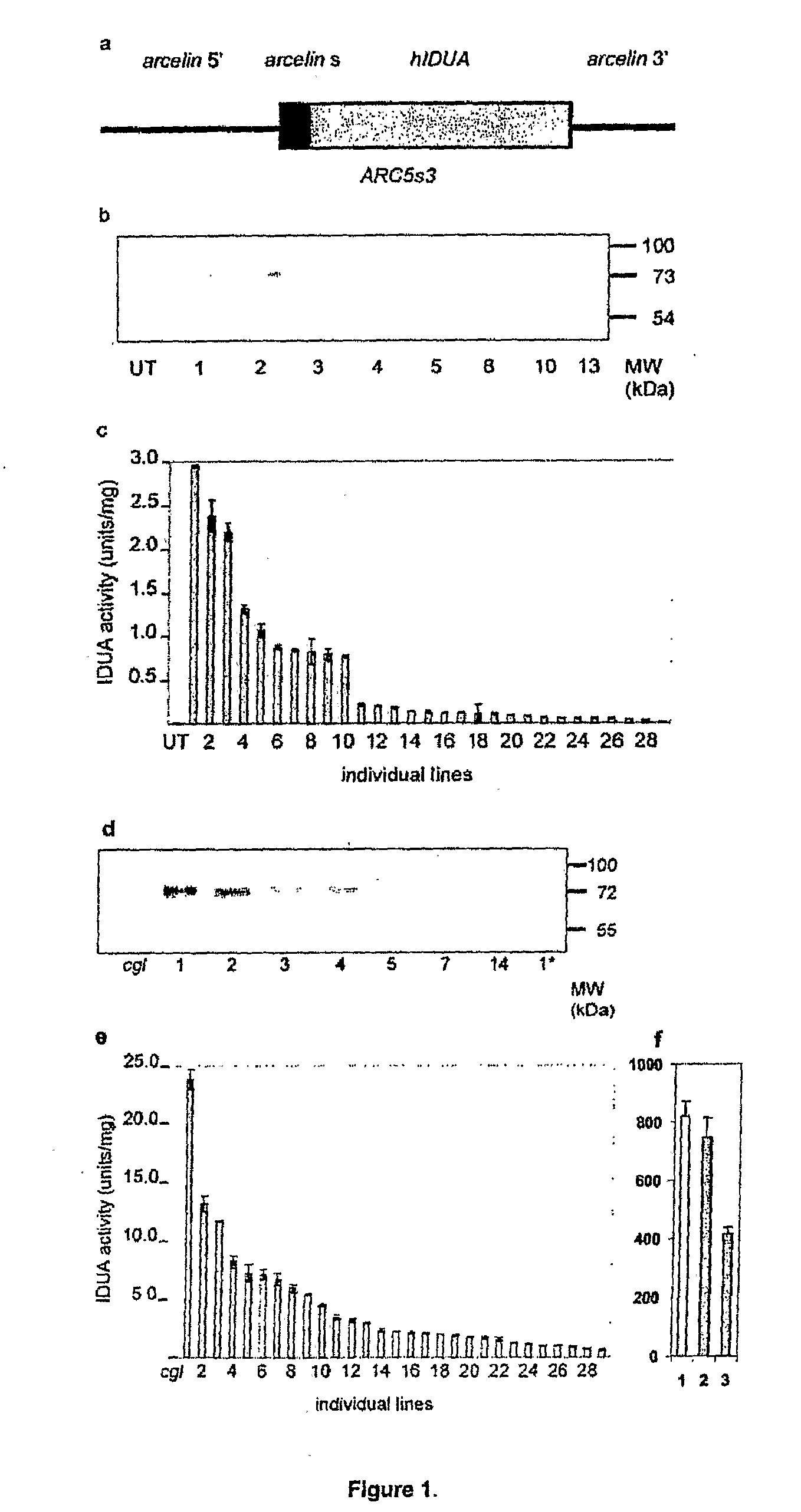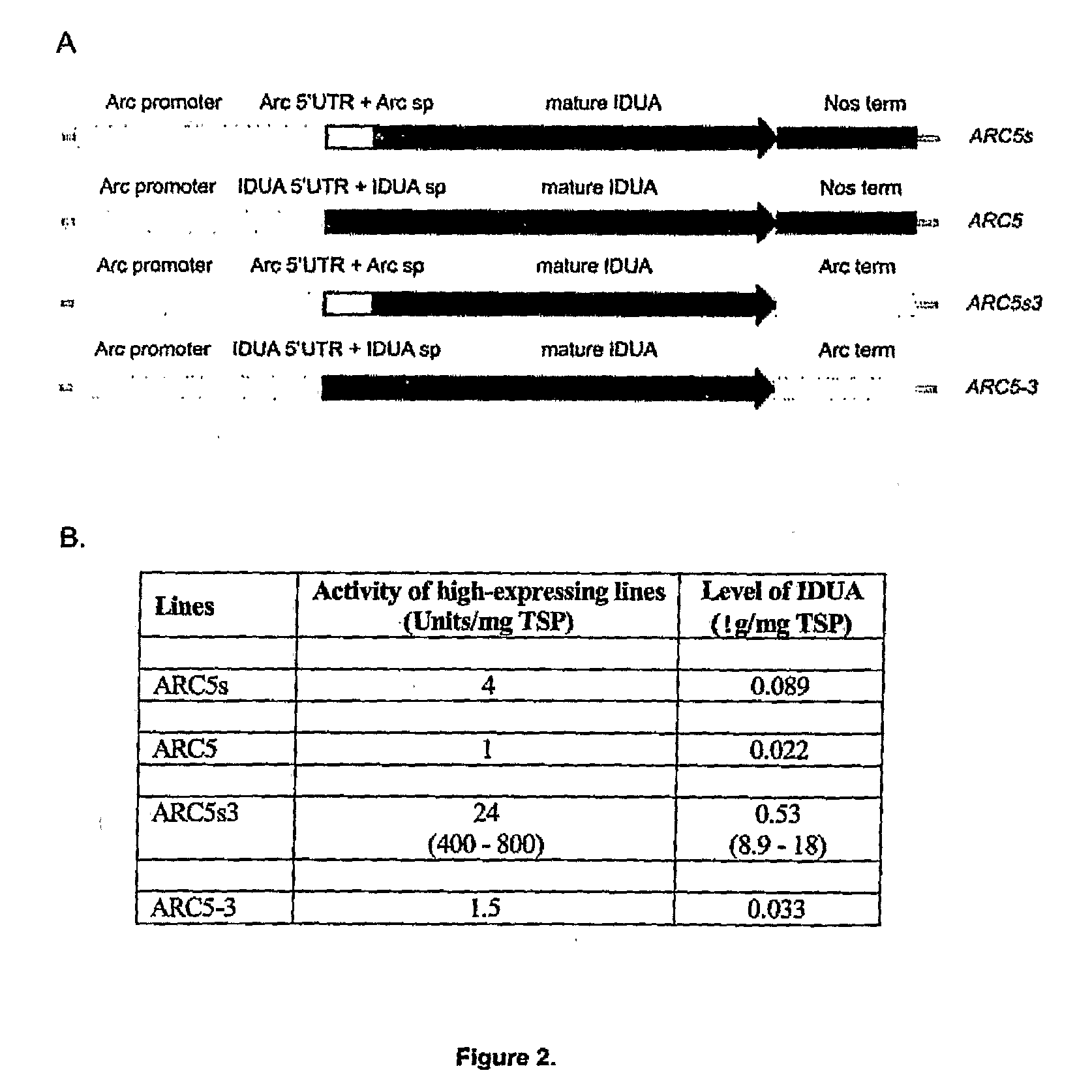Enhancing vegetative protein production in transgenic plants using seed specific promoters
a technology of promoters and vegetative proteins, applied in foreign genetic material cells, plant cells, enzymes, etc., can solve the problems of low yield of the protein of interest, and achieve the effect of reducing the efficacy of plant-derived recombinant proteins
- Summary
- Abstract
- Description
- Claims
- Application Information
AI Technical Summary
Benefits of technology
Problems solved by technology
Method used
Image
Examples
example 1
Construction of Vectors for Plant Expression of Human IDUA
General Approach and Principles
[0052]Gene constructs are shown in FIG. 3. The gene regulatory sequences used to demonstrate the technology were chosen because of their ability to generate high-level expression of the human recombinant protein α-L-iduronidase (IDUA) in Arabidopsis seeds (FIGS. 1 & 2; Table 1). The promoter used in the example (the arcelin gene promoter) is classed as generally seed-specific; thus, it is expected to yield little or no expression of the (α-L-iduronidase (IDUA) gene in the vegetative tissues of transgenic plants. In principle, the expression cassette designed for expression of the recombinant protein need not be from the arcelin gene, but could be one of most of the ABA / ABI3-responsive promoters (e.g. those of LEA- or LEA-like genes, storage-protein genes and the oleosin gene as well as others). The “ectopic” activation of the chimeric gene in plant vegetative tissues is achieved by expression of...
example 2
Stable Expression Studies in Transgenic Tobacco Leaves
[0055]Construct (c) (FIG. 3) was cloned into the binary vector pBI101 and transformed into Agrobacterium tumefaciens strain GV3101. Construct (d) (FIG. 3) was cloned into the binary vector, pRD400. The CnABI3 construct (construct a) was cloned into the HindIII and EcoRI sites of the binary vector, pCambia, and transferred into LBA4404 Agrobacterium tumefaciens strain via electroporation (Zeng et al. 2003).
[0056]Transgenic tobacco plants were also generated by co-expressing the CnABI3 gene (construct a) and a gene construct containing the bacterial GUS gene coding region linked to a seed storage protein gene promoter—the vicilin gene promoter (construct b of FIG. 3) (Jiang et al., 1995).
[0057]Stably transformed plants were cultured in magenta boxes at 25° C. and sub-cultured every 3 months. Healthy, fully expanded leaves from 4-week plants were used in the present study.
Ectopic Co-Expression of a Transcription Factor Enhances Prod...
example 3
Effects of ABA on Recombinant Protein Production in Stably Transformed Tobacco Leaves
The Phytohormone ABA has a Synergistic Effect on Enhancing Recombinant Bacterial GUS and Human α-Iduronidase Expression in the Presence of the ABI3 Transcription Factor
[0059]FIGS. 4-9 show that the enhancement of bacterial GUS and human IDUA expression is particularly strong in the presence of the phytohormone ABA. For example, in cotransformed leaves of transgenic tobacco expressing the ABI3 gene (construct a) and the IDUA-KDEL gene (construct d), ABA elicited a 58-fold increase in IDUA activities after 7 days of incubation (FIG. 6). This led to IDUA activities in leaves as high as 16,000 pmol min−1 mg−1. ABA causes its enhancing effects on human IDUA expression at the level of increasing steady-state levels of mRNAs (FIG. 8). This enhanced gene expression in the presence of ABA is accompanied by an increased amount of IDUA protein (FIG. 9) and IDUA activity (FIGS. 6 & 7). The ABA concentration tha...
PUM
| Property | Measurement | Unit |
|---|---|---|
| Fraction | aaaaa | aaaaa |
| Fraction | aaaaa | aaaaa |
| Force | aaaaa | aaaaa |
Abstract
Description
Claims
Application Information
 Login to View More
Login to View More - R&D
- Intellectual Property
- Life Sciences
- Materials
- Tech Scout
- Unparalleled Data Quality
- Higher Quality Content
- 60% Fewer Hallucinations
Browse by: Latest US Patents, China's latest patents, Technical Efficacy Thesaurus, Application Domain, Technology Topic, Popular Technical Reports.
© 2025 PatSnap. All rights reserved.Legal|Privacy policy|Modern Slavery Act Transparency Statement|Sitemap|About US| Contact US: help@patsnap.com



